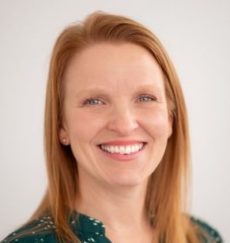
There’s nothing like a couple of days of business travel to make you feel old.
I’m pretty sure the combination of being out of town, out of routine and out of bed too early, for too many mornings in a row, would be enough to give me a few gray hairs if that happened to redheads. (It doesn’t! Look it up.)
But sharing good news with a crowd can also be rejuvenating. And that’s where Laura Carstensen, director of the Stanford Center on Longevity, came in just perfectly at the LeadingAge Leadership Summit in Washington, D.C., last week.
Carstensen was there to discuss how lifespan has changed over the last century. In just a few generations, the life of an average human has increased by 30 years.
In the 1800s, the average human life lasted through the mid-30s. In 1900, lifespan hit 47. Since then, rapidly improving diets, modern medicine and lives assisted by electricity and other inventions have spurred rapid changes in demographics.
“This is why aging is so difficult for so many: It’s brand new!” Carstensen said. “It’s something we have not had in human history.”
Half of all babies born in 2000 or later will make it to 100, and in America, that increases to age 104, Carstensen said.
That’s great news for 1½ of my three kids.
Even the COVID-related blip that drove life expectancy down for the first time in decades won’t likely matter in the long-term, noted Carstensen, comparing it to a negligible decline and a healthy rebound that followed the 1918 flu.
That could also be great news for nursing home operators that have been eagerly awaiting that influx of baby boomers and the thousands upon thousands of aging Americans who will require care as they age.
But here’s the wrinkle: Those same demographics Carstensen studies to reveal how the population is aging also show that fertility is decreasing: The number of babies we’re making is below what she calls “replacement level.”
“That’s what leads to aging societies,” Carstensen said. “Fewer children, longer lives.”
So who will take care of all these seniors? Who will help ensure they get extra quality out of all that extra lifespan?
Carstensen, tongue-in-cheek, encouraged attendees to go out and promote procreation. But she noted even babies born next year won’t be able to enter the caregiver workforce until around 2041 — 11 years after the 65-plus crowd crosses a threshold putting it at 20% of our population.
A century ago, just 4% of the population was over 65, meaning there were plenty of caregivers to go around.
But Carstensen also noted the seniors among us now are not the same as the seniors of 25, 50 or even 100 years ago. They’re more productive, often want to work longer and most likely will be better able to care for themselves for longer.
She pointed to a Journal of Gerontology study that found half of people over age 85 say they’re healthy enough to work, even if they are not actually working.
All of this, of course, makes targeting who will need care and how many people we’ll need to deliver it — and in what settings — a moving challenge.
A group of people much smarter than I (me?) were appointed Map of Life fellows to work with Stanford and reconsider the kind of infrastructure and support, including financial, our aging population will actually need in the decades to come.
Their website proclaims, “We’re not ready” for the 100-year lifespan. But I’d agree with Carstensen that there’s no better time than now to prepare. You know, while we’re still young.
Kimberly Marselas is senior editor of McKnight’s Long-Term Care News.
Opinions expressed in McKnight’s Long-Term Care News columns are not necessarily those of McKnight’s.




